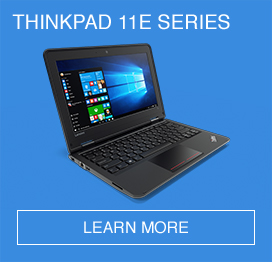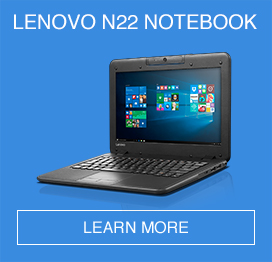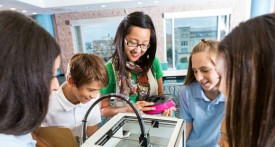Smartboards supplanted the humble overhead projector early this century, and technology continues to drive innovation in education.
For Kardinia International College's information and communications technology manager, Diana Murase, innovation in education is as much about mindset as it is about technology. One of the most important decisions that schools can make is to have technology as one of the cornerstones of everything the school does.
“So, whenever decisions are being made, whether it be about curriculum, online resources or professional development, technology is taken into consideration,” she says. That's why an engaging panel discussion on 'Fostering innovative minds for 2036' emerged at EduTech 2016, an event recently sponsored by Lenovo.
Technology – the interchangeable piece
According to Murase, this is critical for the future. “Technology is an interchangeable piece. Rather than concentrating on a particular device, we’re looking at what technology can provide. It’s about choosing the right device at the right time to meet the right learning needs. So, when we’re actually building our infrastructure and decisions, we’re trying to build a flexible environment where the tools are really critical but it’s just a physical piece of a process.
“While simple things like wi-fi are critical to us, the research coming out now is talking about how to device mesh. It’s not about a student having access to one device they carry around all the time – they have access to a range of devices and programs that let them access the information they need. For example, Microsoft’s OneDrive gives you access to anything from any device.”
Three pillars of technology and learning
Microsoft teacher ambassador Trent Ray added another layer to Murase’s approach by talking about the three pillars to successfully integrating a technology and innovating within the curriculum. “The first pillar is around practice. This is about the pedagogy – the learning design that's wrapped around any of piece of technology we have in our schools. That’s the critical piece. It’s investing in teachers so they’re able to understand the potential of a device but also understand how to design the learning to actually develop skills their students will need in 2020 or 2036.”
One example of great design can be found in the digital pen. Trent said that according to Sharon Oviatt’s book, The Design of Future Educational Interfaces, 56 per cent more ideas are generated when brainstorming with a digital pen. It's these insights which influence Lenovo's design on products, such as the ThinkPad Yoga 260 or Yoga 11e, powered by Intel® processors, both having an integrated digitizer pen for easy carrying and use for students and teachers.
Another pillar Ray identified is the importance of the educators themselves being lifelong learners. It's important to learn how to use technology as it changes and disrupts, so teachers need to be lifelong learners, he said. “Building a culture of lifelong learners is very important.”
Thirdly, he identified that hardware and technology are just part of the puzzle. The online platforms and programs that now give students access to anywhere, anytime learning are not only ‘pretty cool’ but vital for the future development of today’s school children.
Schools a punishing environment
Lenovo product marketing manager Lindsay Tobin says that while it’s important not to get too focused on devices, when it comes to mobility there are still some important choices schools need to make. He said that schools need to consider whether the devices are intended to be taken home or left at school.
“It’s the most punishing environment for a laptop computer to give it to a school kid and tell them to take it home and bring it to school every day. One of the most frustrating experiences for a teacher is when they tell kids to turn on the laptop and not all of them are working, so it’s important that the devices are fit for purpose,” said Tobin.
“Students of today and tomorrow are very technically literate and they’re going to be using tablets at home. They will want to use that tech but at the same time, you can’t beat a traditional keyboard when doing a lot of typing. Overall, it comes down to choice.”
Creativity the key
James Alexander, founder of Incubate (an award-winning start-up accelerator and entrepreneur program established by the University of Sydney Union), says that any discussion about technology and education needs to include environment students' needs as they enter the workforce.
“Let’s assume they go to uni; they’re going to be graduating to very uncertain environments. A lot of traditional industries are already being disrupted. In our program at Incubate, we help entrepreneurs at university start companies and one of the things we want to see is much more entrepreneurial thinking,” said Alexander.
“It’s very creative thinking in a way, but how do you design programs to foster and develop that kind of skillset? Independent learning, creative thinking and entrepreneurial skills are important elements that need to be embedded in our school curriculum."
Lenovo® ThinkPad® and ThinkCentre® products, powered by Intel® processors, are optimised for long, worry-free hours of superior productivity which provide a better teaching and learning experience for all. Speak with a Lenovo education specialist today to learn more.


















